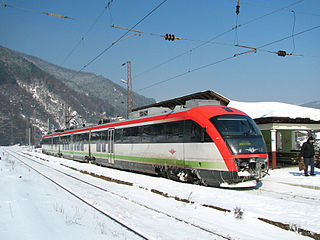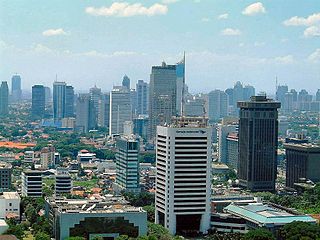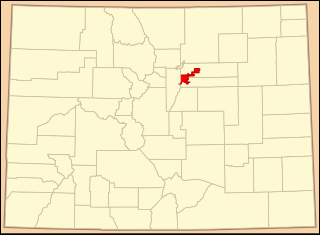This article considers transport in Armenia. For Soviet transportation, see Transport in the Soviet Union.

Transport in Bulgaria is dominated by road transport, despite nearly half of all paved roads belonging to the lowest category of roads. As of December 2015, the country had 774 kilometers of highways.
Transport in Hungary relies on several main modes, including transport by road, rail, air and water.
As a densely populated country in a central location in Central-Southeastern Europe and with a developed economy, Romania has a dense and modern transportation infrastructure.

Switzerland has a dense network of roads and railways. The Swiss public transport network has a total length of 24,500 kilometers and has more than 2600 stations and stops.

Sofia is the capital and largest city of Bulgaria. The city is at the foot of Vitosha mountain in the western part of the country. Being in the centre of the Balkans, it is midway between the Black Sea and the Adriatic Sea, and closest to the Aegean Sea.

Tricity, or Tri-City is a metropolitan area in northern Poland, consisting of three cities: Gdańsk, Gdynia and Sopot, as well as minor towns in their vicinity. They are situated adjacent to one another, in a row on the coast of Gdańsk Bay, Baltic Sea, in Eastern or Gdansk Pomerania. The Tricity metropolitan area has a population of over 1 million people.

Frankfurt am Main Airport is a major international airport located in Frankfurt, the fifth-largest city of Germany and one of the world's leading financial centres. It is operated by Fraport and serves as the main hub for Lufthansa including Lufthansa CityLine and Lufthansa Cargo as well as Condor and AeroLogic. The airport covers an area of 2,300 hectares of land and features two passenger terminals with a capacity of approximately 65 million passengers per year, four runways and extensive logistics and maintenance facilities.

An underground city is a series of linked subterranean spaces that may provide a defensive refuge; a place for living, working or shopping; a transit system; mausolea; wine or storage cellars; cisterns or drainage channels; or several of these.
Birmingham is a major transport hub, due in part to its location in central England. Public transport and key highways in the city are overseen by Transport for West Midlands (TfWM).

Sofia Airport is the main international airport of Bulgaria, located 10 km (6.2 mi) east of the centre of the capital Sofia. In 2019 the airport surpassed 7 million passengers for the first time. The airport serves as the home base for BH Air, Bulgaria Air, and Bulgarian Air Charter and as a base for both Ryanair and Wizz Air. The Vrazhdebna Air Base of the Bulgarian Air Force is at the airport.

The Jakarta metropolitan area, known locally as Jabodetabek, Jabodetabekjur, or Jabodetabekpunjur, is the most populous metropolitan area in Indonesia. It includes the national capital Jakarta as the core city as well as five satellite cities and four regencies. The original term "Jabotabek" dated from the late 1970s and was revised to "Jabodetabek" in 1999 when "De" was inserted into the name following its formation. The term "Jabodetabekjur" or "Jabodetabekpunjur" was legalised on the Presidential Regulation Number 54 of 2008.

The Sofia Metro is the rapid transit network servicing the Bulgarian capital city Sofia. It began operation on 28 January 1998. As of July 2016, the Sofia Metro consists of two interconnected lines, serving 35 stations, with a total route length of 40.0 kilometres (24.9 mi) being among the top 30 of the most extensive European metro systems. The Metro links the densely populated districts of Lyulin – Mladost and Nadezhda – Lozenets, and serves the Sofia Airport.

Transport in Chennai includes various modes of air, sea, road and rail transportation in the city and its suburbs.

Public transport in Helsinki consists of bus, tram, metro, local railway and ferry services. The system is managed by Helsinki Region Transport and covers Helsinki, Espoo, Kauniainen, Vantaa and the outlying Kerava, Kirkkonummi and Sipoo.
Transport in Cardiff, capital and most populous city in Wales involves road, rail, bus, water and air. It is a major city of the United Kingdom and a centre of employment, government, retail, business, culture, media, sport and higher education.

Berlin has developed a highly complex transportation infrastructure providing very diverse modes of urban mobility. 979 bridges cross 197 kilometers of innercity waterways, 5,334 kilometres (3,314 mi) of roads run through Berlin, of which 73 kilometres (45 mi) are motorways.

Stapleton is a neighborhood within the city limits of Denver, Colorado. Located northeast of downtown Denver, the development is on the site of the decommissioned Stapleton International Airport, which closed in 1995. Now referred to as the Stapleton Community, it contains nine neighborhoods, nine schools public/private, 50 parks, several shopping and business districts, and a visitor center. Since April 2016, Stapleton has been connected to the Denver metro area by RTD's A line, a recently opened commuter rail service. North Stapleton borders the Rocky Mountain Arsenal Wildlife Preserve.
Transport in Copenhagen and the surrounding area relies on a well established infrastructure making it a hub in Northern Europe thanks to its road and rail networks as well as its international airport. Thanks to its many cycle tracks, Copenhagen is considered to be one of the world's most bicycle-friendly cities. The metro and S-train systems are key features of the city's well-developed public transport facilities. Since July 2000, the Øresund Bridge has served as a road and rail link to Malmö in Sweden. The city is also served by ferry connections to Oslo in Norway while its award-winning harbour is an ever more popular port of call for cruise ships.

Madrid is served by highly developed transport infrastructure. Road, rail and air links are vital to maintain the economic position of Madrid as a leading centre of employment, enterprise, trade and tourism, providing effective connections with not only other parts of the region, but also the rest of Spain and Europe as a whole. Three quarters of a million people commute into the city to work, and these and other local travellers have available a high-capacity metropolitan road network and a well-used public transport system based on the Metro, the Cercanías local railways, and a dense network of bus routes.





















